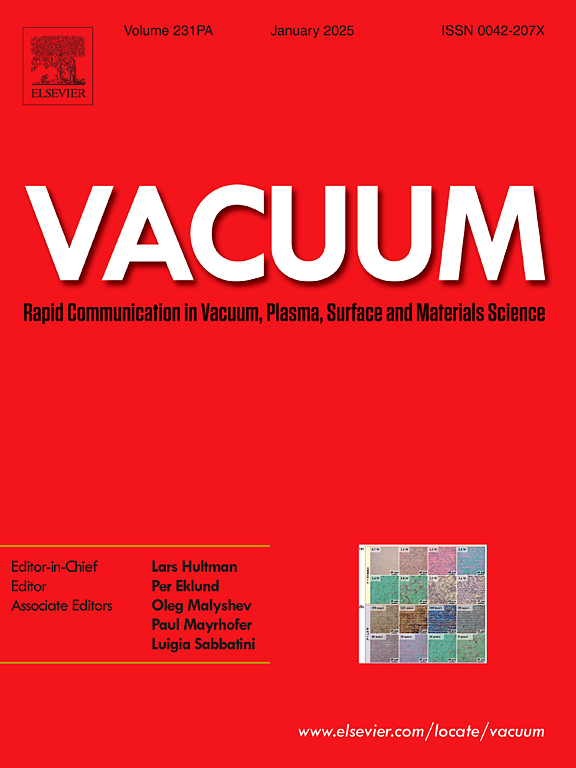用于原位偏振中子反射测量的紧凑脉冲激光沉积系统
IF 3.8
2区 材料科学
Q2 MATERIALS SCIENCE, MULTIDISCIPLINARY
引用次数: 0
摘要
具有自旋轨道相互作用的铁磁体/重金属薄膜结构(如CoFeB/Mo)的发展需要先进的生产和研究方法。极化中子反射法(PNR)提供了对磁性演变的独特见解,特别是在生长过程中原位应用时。脉冲激光沉积(PLD)是一种生产磁性薄膜的通用方法,将PLD与原位PNR测量相结合为其研究提供了新的可能性。在这项工作中,我们开发了一个紧凑的真空室集成到中子仪器中,可以逐步沉积和原位PNR测量。培养出Mo/[CoFeB/Mo]12多层结构,每次循环后测量的中子反射率曲线显示了样品性质的逐渐演变。弱磁场响应表明CoFeB/Mo界面可能形成垂直磁各向异性(PMA)。此外,将单个CoFeB薄膜退火至450°C,然后沉积一层~ 5 Å Mo层。在0.01 T和0.75 T的磁场下,PNR测量结果显示PMA的面内磁化显著增加,证实了PMA的形成。因此,我们展示了PLD和原位PNR系统的首次成功运行,展示了其表征单层CoFeB和多层CoFeB/Mo薄膜结构的能力。本文章由计算机程序翻译,如有差异,请以英文原文为准。
Compact pulsed laser deposition system for in-situ polarized neutron reflectometry
The development of ferromagnet/heavy metal thin-film structures, such as CoFeB/Mo, with spin-orbit interaction requires advanced methods for their production and study. Polarized neutron reflectometry (PNR) provides unique insights into the evolution of magnetic properties, especially when applied in-situ during the growth process. Pulsed laser deposition (PLD) is a versatile method for producing magnetic thin films, and combining PLD with in-situ PNR measurements offers new possibilities for their investigation.
In this work, we developed a compact vacuum chamber integrated into the neutron instrument, enabling step-by-step deposition and in-situ PNR measurements. A multilayer Mo/[CoFeB/Mo]12 structure was grown, and neutron reflectivity curves measured after each cycle revealed the gradual evolution of sample properties. A weak magnetic field response suggested the potential formation of perpendicular magnetic anisotropy (PMA) at CoFeB/Mo interfaces. Additionally, a single CoFeB film was annealed up to 450 °C, followed by the deposition of a ∼5 Å Mo layer. PNR measurements in magnetic fields of 0.01 T and 0.75 T showed a significant increase in in-plane magnetization, confirming PMA formation.
Thus, we demonstrate the first successful operation of a combined PLD and in-situ PNR system, showcasing its capabilities for characterizing single-layer CoFeB and multilayer CoFeB/Mo thin-film structures.
求助全文
通过发布文献求助,成功后即可免费获取论文全文。
去求助
来源期刊

Vacuum
工程技术-材料科学:综合
CiteScore
6.80
自引率
17.50%
发文量
0
审稿时长
34 days
期刊介绍:
Vacuum is an international rapid publications journal with a focus on short communication. All papers are peer-reviewed, with the review process for short communication geared towards very fast turnaround times. The journal also published full research papers, thematic issues and selected papers from leading conferences.
A report in Vacuum should represent a major advance in an area that involves a controlled environment at pressures of one atmosphere or below.
The scope of the journal includes:
1. Vacuum; original developments in vacuum pumping and instrumentation, vacuum measurement, vacuum gas dynamics, gas-surface interactions, surface treatment for UHV applications and low outgassing, vacuum melting, sintering, and vacuum metrology. Technology and solutions for large-scale facilities (e.g., particle accelerators and fusion devices). New instrumentation ( e.g., detectors and electron microscopes).
2. Plasma science; advances in PVD, CVD, plasma-assisted CVD, ion sources, deposition processes and analysis.
3. Surface science; surface engineering, surface chemistry, surface analysis, crystal growth, ion-surface interactions and etching, nanometer-scale processing, surface modification.
4. Materials science; novel functional or structural materials. Metals, ceramics, and polymers. Experiments, simulations, and modelling for understanding structure-property relationships. Thin films and coatings. Nanostructures and ion implantation.
 求助内容:
求助内容: 应助结果提醒方式:
应助结果提醒方式:


